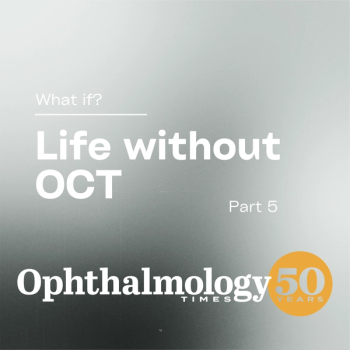
Post hoc analysis of ESSENCE 1 trial highlights efficacy of 0.1% cyclosporine solution for dry eye treatment
Key Takeaways
- The ESSENCE 1 trial showed 71% of moderate dry eye patients responded positively to 0.1% cyclosporine in a semifluorinated alkane vehicle by day 28.
- Post hoc analysis indicated 25% of patients with positive MMP-9 became negative, demonstrating reduced inflammation.
John D. Sheppard, MD, MMSc, FACS, spoke with the Eye Care Network to provide some insight on post hoc analysis of the ESSENCE 1 trial dor dry eye disease.
This transcript has been lightly edited for clarity.
John D. Sheppard, MD, MMSc, FACS: Hello. I'm Dr John Shepherd from Norfolk, Virginia, a cornea-external disease-uveitis, specialist with Virginia Eye Consultants and Eyecare Partners. What I'd like to speak to you about today is some post hoc analysis of the ESSENCE 1 trial. This was a prospective randomized multi-center mask trial of a 0.1% cyclosporine solution as an API in a novel vehicle called a semifluorinated alkane. This is a water-free, and therefore water insoluble, compound which requires no preservatives, and therefore highly solubilizes the API cyclosporine. And we looked at this in moderate dry eye patients. What we found, of course, is that the primary endpoint, in ESSENCE 1 day 28, there was resolution of signs and symptoms to the point that 71% of patients enrolled were responders taking the medication. Clearly, statistically significantly superior to the vehicle, which was also the semi fluorinated alkane. In the post hoc analysis, since cyclosporine is a immunomodulator and anti inflammatory, we looked at the number of patients who had a positive MMP 9, a marker for inflammation, and thereafter became negative at day 28. Matrix metalloprotease 9 is an accepted and office available diagnostic tool to look at inflammation in the surface of dry eye patients. And what was found, of course, is that 25% of the patients who were MMP 9 positive became MMP 9 negative at that primary endpoint day 28, clearly showing that we have a valid, available clinical marker for resolution of inflammation in dry eye disease patients.
Many dry eye patients have aqueous deficiency. The majority of patients with dry eye have an evaporative component. There is an inflammatory instigator in both situations. This is why anti inflammatories have worked so well for dry eye, many of us, of course, have used brief pulses of steroids to initiate the therapy. I find with a 28 day endpoint of statistically significant improvement and a high percentage of responders that perhaps steroid induction therapy is not necessary with a product containing 0.1% cyclosporine and a semi fluorinated alkane vehicle. And this means that the vast majority of my patients with dry eye should respond well to this particular prescription. So, who are the target population? They could be cataract preoperative patients. They could be patients using other cyclosporine containing dry eye products who are not happy, and they could be new prescribed patients who have not tried anything for their dry eye, but have failed on tears or natural supplements or punctal plugs or even preservative free tears. So, this is a very broad market and a wide applicability. So what becomes essential to the prescriber? Tolerability and sustainability and no call backs to the office and very few PAs. We're looking forward to a smooth sailing horizon with this particular treatment.
Newsletter
Don’t miss out—get Ophthalmology Times updates on the latest clinical advancements and expert interviews, straight to your inbox.



















































.png)


